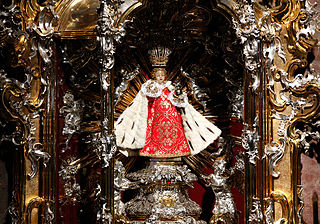Saba سبا | |
|---|---|
village | |
| Country | |
| Province | Bushehr |
| County | Dashtestan |
| Bakhsh | Sadabad |
| Rural District | Vahdatiyeh |
| Population (2006) | |
| • Total | 107 |
| Time zone | UTC+3:30 (IRST) |
| • Summer (DST) | UTC+4:30 (IRDT) |

Saba (Persian : سبا, also Romanized as Sabā; also known as Dakān Sorkh) is a village in Vahdatiyeh Rural District, Sadabad District, Dashtestan County, Bushehr Province, Iran. At the 2006 census, its population was 107, in 24 families. [1]

Persian, also known by its endonym Farsi, is one of the Western Iranian languages within the Indo-Iranian branch of the Indo-European language family. It is primarily spoken in Iran, Afghanistan, and Tajikistan, Uzbekistan and some other regions which historically were Persianate societies and considered part of Greater Iran. It is written right to left in the Persian alphabet, a modified variant of the Arabic script, which itself evolved from the Aramaic alphabet.
Vahdatiyeh Rural District is a rural district (dehestan) in Sadabad District, Dashtestan County, Bushehr Province, Iran. At the 2006 census, its population was 2,120, in 450 families. The rural district has 15 villages.
Sadabad District is a district (bakhsh) in Dashtestan County, Bushehr Province, Iran. At the 2006 census, its population was 31,928, in 6,772 families. The District has two cities: Sadabad and Vahdatiyeh. The District has two rural districts (dehestan): Vahdatiyeh Rural District and Zirrah Rural District.
Marco Polo was told that the village of Saba was where the three Magi who visited the Christ Child are buried. [2]

Marco Polo was an Italian merchant, explorer, and writer, born in the Republic of Venice. His travels are recorded in Livre des merveilles du monde, a book that described to Europeans the wealth and great size of China, its capital Peking, and other Asian cities and countries.
Magi denotes followers of Zoroastrianism or Zoroaster. The earliest known use of the word Magi is in the trilingual inscription written by Darius the Great, known as the Behistun Inscription. Old Persian texts, pre-dating the Hellenistic period, refer to a Magus as a Zurvanic, and presumably Zoroastrian, priest.

The Christ Child, also known as Divine Infant, Baby Jesus, Infant Jesus, Child Jesus, the Holy Child, and Santo Niño, refers to Jesus Christ from his nativity to age 12.


